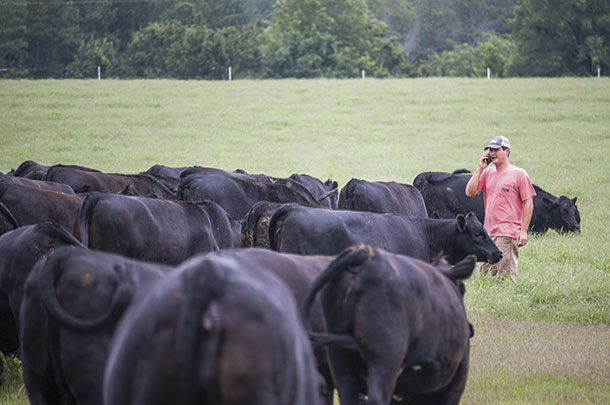Since the release, USDA-NASS and outside organizations have been analyzing the data to gauge trends of various industry sectors.
While the census gives a picture of U.S. agriculture at a certain point in time, analysis of the data can offer insight into the threats and opportunities that exist for the future of various agricultural enterprises and demographic groups. A demographic group of interest is considered to be the “next generation” – what do the trends have to tell them?
Three points paint a not-so-encouraging picture of agriculture for the next generation. First, American farmers, on average, are getting older. As reported by the National Young Farmers Coalition, the average age of primary producers increased from 58.3 years in the 2012 census to 59.4 years in 2017, while the average of all producers increased from 56.3 to 57.5 years.
In addition, the number of primary producers over 65 outnumber farmers under 35 by more than 6 to 1, which is also an increase. This means farmers are retiring at a higher rate than there are successors to take their place.
The second point is about land availability. The 2017 census reports land in farms has decreased by over 14 million acres, and the total number of farms has decreased by over 67,000. To further paint this point, the midsize farm numbers declined from 2012 to 2017, while very large farms increased in numbers. This shows consolidation is taking place as very large farms buy out midsized farms or the land from those midsize farms is sold for other purposes, like development.

Last, the census shows what most already know: Farm expenses are on the rise. Increases in the cost of animal feed, livestock and farm labor create slim profit margins and high risk of losing investment capital.
When these three points are coupled with trends such as high student loan debt and lack of overall experience in agriculture, the outlook of American agriculture is not a pretty picture. How will the next generation feed the world?
The short answer is: differently than previous generations. The longer answer can be found in the characteristics and traits of the next generation that may or may not be found by looking back at census data.
Adopters of technology
First, the next generation is the first to be raised in the technology era. Embracing and anticipating the release of the next best gadget and tech tool has been a constant part of their upbringing. Luckily, those same technology ripples are being felt across agriculture.
According to an article published by AgAmerica Lending in December 2018, roughly $1.5 billion was invested in the ag tech industry in 2017. Another interesting data point reported by AgAmerica Lending is: More than 66,000 remote drone pilots were certified by the Federal Aviation Administration in 2017. That doesn’t mean all those drone operators are involved in agriculture, but one thing it does mean is: The ease of doing aerial surveys of property is no longer only available to producers with airplanes.
The applications of technology in agriculture are endless, including everything from remote stock water monitoring and advanced animal breeding technology to precision irrigation and feed rations. While previous generations have, in some respects, been forced to adapt as technology has moved into agriculture, the next generation is already positioned to not only embrace the current technology but develop the next best options.
Being green-minded
Second, the next generation is increasingly conscientious of the environment. Pairing a concern for the environment with an aptitude for technology is a win-win for agriculture. One example may be with the use of drone technology. By monitoring crops or pastures using a drone, a producer can discover problems before they become more widespread. Before this application of technology, a plant disease situation might not be discovered until it has impacted much of a crop. Pair that with tractors which can deliver pesticide directly to an affected area because of GPS/GIS technology, and producers can not only decrease pesticide costs but also the amount of chemicals impacting the soils.
Thinking big but smaller
The last characteristic of the next generation’s future ag success can partially be seen by looking at the 2017 Census of Agriculture. That is, a shift toward small farms and local food. As mentioned earlier, the number of midsized farms decreased, and the number of large farms increased from 2012 to 2017. Another sector of farm size that increased slightly from 2012 to 2017 were very small farms. A very small farm is defined as those making less than $2,500 in sales per year.
As the producers operating midsized farms retire, their land is most likely either being purchased by the larger farms or sold for development. As the next generation seeks ways to grow their own food or buy from producers near where they live, there’s a growing opportunity for producers to establish a small farm on small acreage. Food co-ops, farmers markets and social media marketing provide avenues for success to producers choosing to contribute to agriculture in this way.
Deciding outcomes
The question remains: How will the next generation be attracted to agriculture, especially if some data trends suggest it’s not a profitable or worthwhile venture? Communication is and will continue to be the key. Retiring producers must have tough conversations with their families about succession. It will take businesses actively recruiting youth and young adult audiences. Extension and other educators need to invest in 4-H and FFA programs, and technical and undergraduate degrees. It will require agricultural professionals in all industry sectors telling their story louder than those painting a negative picture of agriculture.
The next generation brings strengths and character traits to agriculture unlike any previous generation. The 2017 Census of Agriculture provides a picture of what agriculture has been and what the trends ahead may be. By understanding who the next generation of agricultural professionals are, we can expect different agricultural practices and approaches moving forward, but the industry will be in capable hands. ![]()
PHOTOS: Attracting an incoming generation of ranchers to agriculture will require an appeal to their connection to land, technology and sustainable livestock for any size of operation. Photos by Cassidy Woolsey.

-
Rebecca Mills
- Extension Specialist
- University of Idaho







